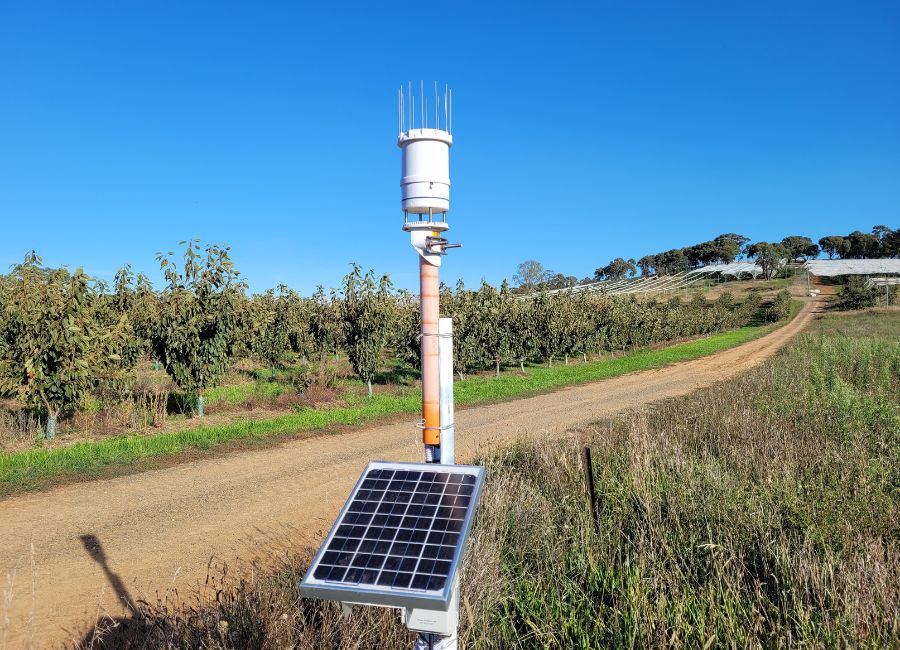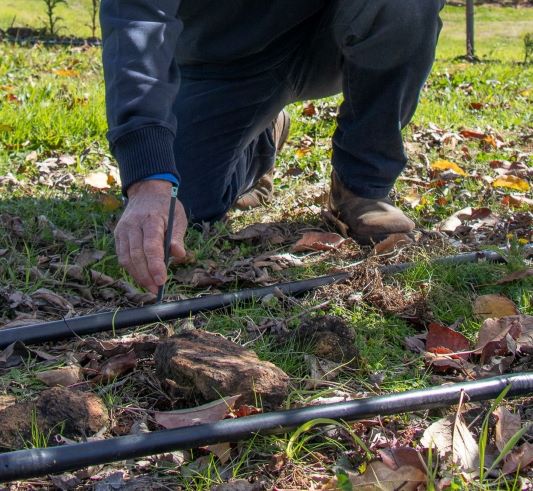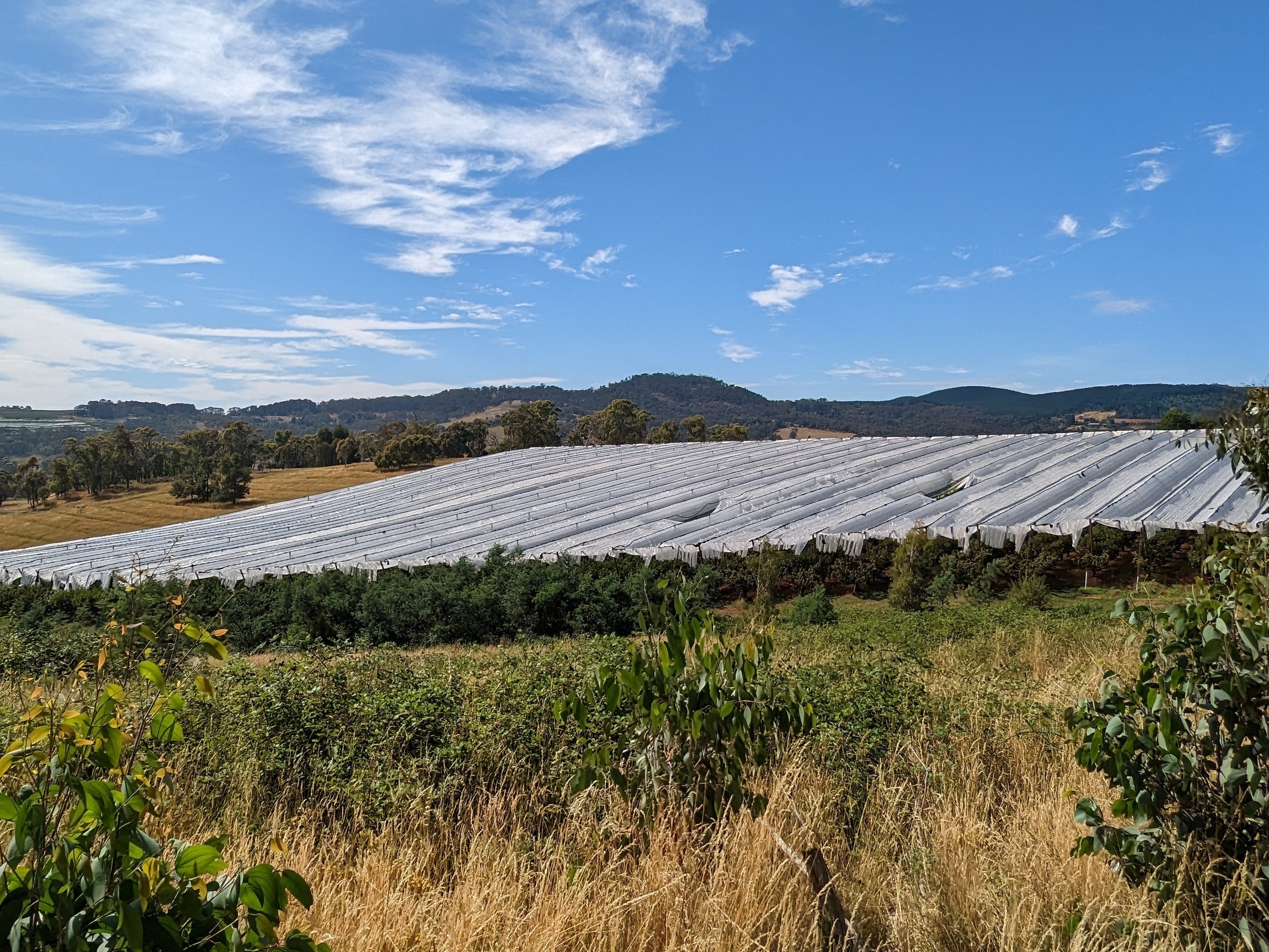Weather station on Apple Orchard
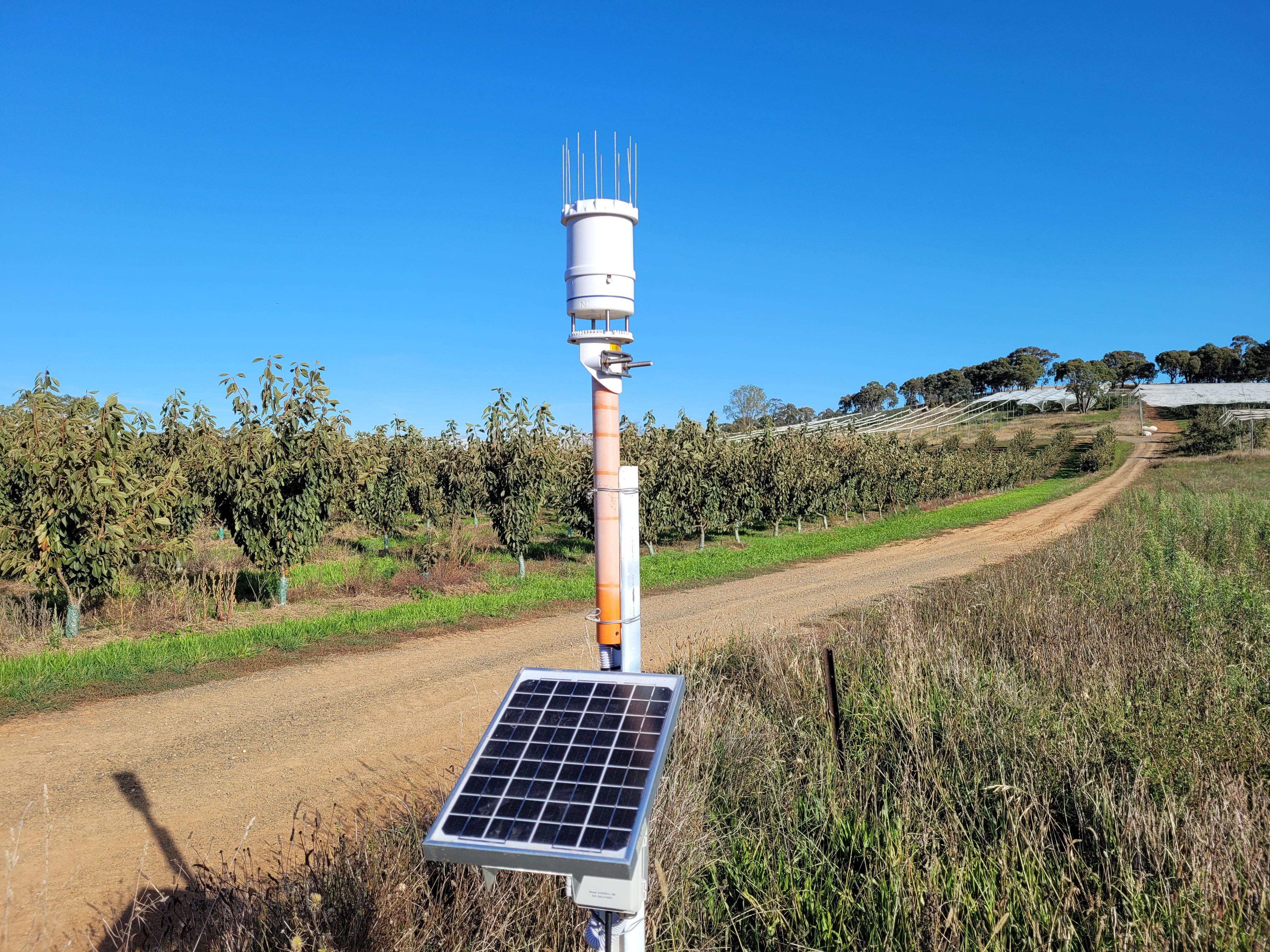
Sensor on Irrigation Line
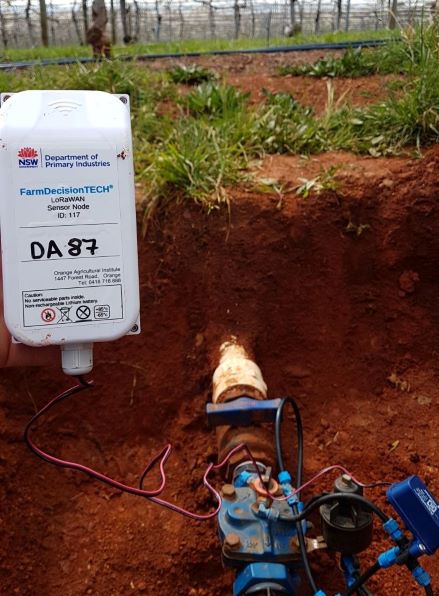
Soil Moisture Sensor
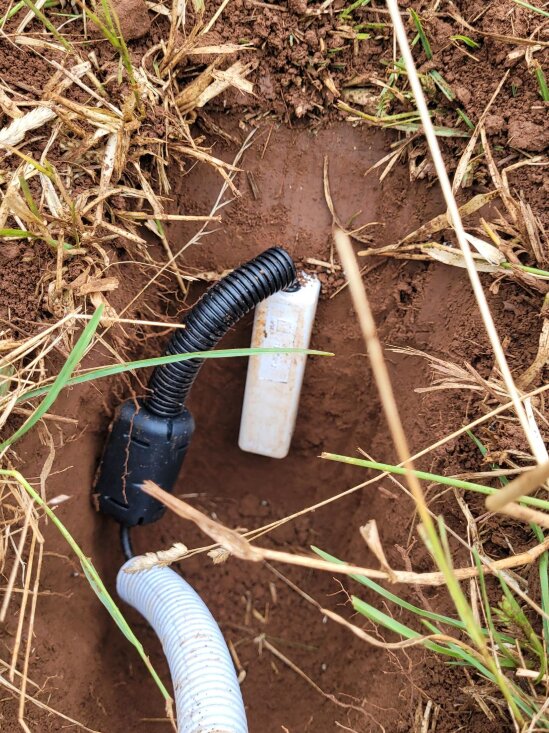
In-canopy sensors complement the weather data captured from the on-site automatic weather station (AWS). The AWS provides the grower with site specific data for the orchard compared to the public weather station 25km away. For example, the chill factor calculated from the temperature at the orchard was achieved 2 weeks later than that by the public weather station. This detailed data can better help the grower plan for the coming season.
Soil moisture sensors were installed at several locations throughout the orchard and showed almost immediately that blocks with drip irrigation had a deeper water store than those with sprinkler irrigation. This led to an immediate decision of the grower to replace all sprinklers with a dripper irrigation system.
The orchardist commented that had the decision been made earlier, it is likely no blocks would have been lost to drought.
It must be noted that producers found data from the soil moisture sensors difficult to interpret and the accuracy of the data varied between soil type. Other factors as a result of installation, such as air pockets around the moisture sensor, impacted the utility of the data in decision making.
The existing irrigation system was upgraded to include a flow sensor on the main pump. Flow sensors measure the amount of water delivered during irrigation, allowing farmers to monitor water usage and detect any problems in their irrigation system. The amount of water applied can then be related to water demand by the plant, improving water use efficiency.
To improve water use efficiency, the Digital Agriculture team set up an automatic irrigation system on Stoneleigh, however, the dashboard was complicated to use and there were issues with the controller not operating as expected. Due to the limitations of the irrigation controllers and the dashboard, the team ended the automatic irrigation system trial.
Training Activities
In addition to digital technologies, efficient irrigation management also needs knowledge, training, and experience. The project provided an intensive ‘Irrigation Masterclass’ to citrus and wine grape growers in the Riverina and Sunraysia districts, and to apple and cherry growers in the Central Tablelands.
The three-day irrigation masterclasses were delivered in split half to three quarter day sessions. Key features of the masterclasses are exercises to ensure participants understand plant water requirements, soil water-holding capacity, and plant-soil interactions. The masterclass also provided detailed explanations and exercises on interpreting soil moisture data to determine irrigation requirements.
Outcomes from the pilot
Monitoring irrigation and using data to make informed decisions will improve a grower’s ability to be more resilient to climate change by being more efficient with the available water resources. Improving irrigation efficiency will reduce water wastage and help to deliver the required water to the plants, without negatively affecting crop yield or fruit quality.
Technology such as soil moisture sensors, weather stations, bore sensors and in canopy sensors can assist growers to make informed decisions and help them respond to increasing climate variability.
A key outcome for the farmer partnering in the project was that local weather data was more relevant for their operations than data from regional weather stations, thereby enabling the farmer to make decisions with greater confidence.
References
NSW Department of Planning, Industry, and Environment (2021), Macquarie Valley snapshot 2017-2020 Drought, accessed April 30, 2024
NSW Department of Primary Industries (2024), Climate Vulnerability Assessment Factsheet: Cherry accessed April 30, 2024
Horticulture Pilot Poster
(PDF, 14837.93 KB)

Hear how other farmers are adapting to climate change
Ian and Pru Pearce
Apples and Cherries

Justin and Pip Jarrett
Wine Grapes

Alisdair and Keith Tulloch
Wine Grapes

Climate-Smart Farmer Stories
Hear from farmers who are adapting to the changing climate.This work was part of the Primary Industries Climate Change Research Strategy and was funded by the NSW Government’s Climate Change Fund.
 Apples
Apples


